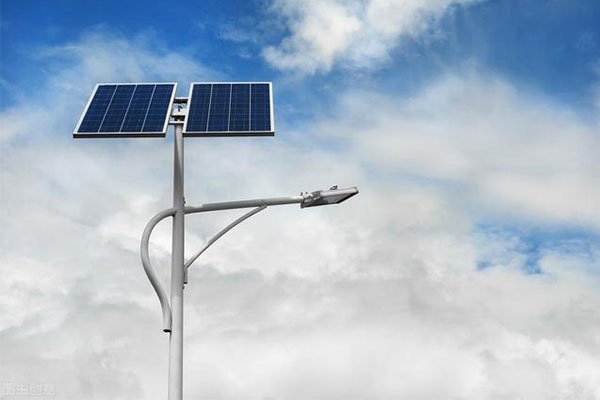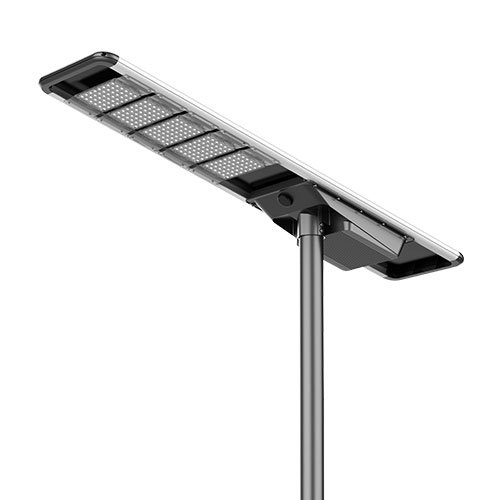Solar streetlights are booming across cities and towns. As traditional lighting struggles with rising costs and environmental pressures, solar options are taking center stage.
Smart features make solar streetlights not just efficient, but intelligent, reliable, and future-proof. Knowing what to demand is key to making a smart investment.
Today, I’ll break down everything you need to know. Follow this guide, and you won’t just buy solar lights—you'll invest in the future.
Why Smart Solar Streetlights Are Worth the Investment?
Urban planners, businesses, and communities are shifting to smart solar streetlights. The reason is simple: they offer unmatched value and sustainability.
Smart solar streetlights save money, boost efficiency, improve safety, and support environmental goals.
Switching to smart solar lights is not just about saving a few dollars. It is about building smarter communities for the future.
Cost Savings Over Traditional Lighting
Conventional streetlights burn through electricity bills. With solar, sunlight powers your lights, cutting costs to near zero after installation.
- Initial Investment: Higher than traditional lights
- Operational Costs: Much lower
- ROI Timeline: Typically 2-5 years depending on local conditions
Smart features like dimming and remote control further enhance these savings by optimizing energy use.
Enhanced Energy Efficiency
Solar panels have improved dramatically. Monocrystalline panels, in particular, now offer superior energy conversion, meaning even cloudy days are no problem.
- High-efficiency panels: Over 20% conversion rate
- Smart batteries: Ensure power availability even during poor weather
Improved Public Safety and Aesthetics
Adaptive lighting brightens walkways as people approach. Public spaces feel safer, more welcoming, and better managed.
- Smart surveillance options: Real-time monitoring boosts security
- Design: Sleek, modern designs uplift city aesthetics
Eco-Friendly, Supporting Sustainability Goals
Governments and organizations everywhere now prioritize eco-projects. Smart solar streetlights help meet:
- Carbon emission reduction goals
- Smart city initiatives
- Sustainable urban development standards
Key Smart Features You Must Demand?

The right features determine whether your smart streetlights will succeed or disappoint.
Demand these features to ensure long-term performance, savings, and compatibility with future smart city upgrades.
2.1. Automatic Dimming and Brightness Control?
Streetlights shouldn’t stay at full brightness all night. That’s a waste.
Smart lights adjust brightness based on traffic, time, or weather, saving power and extending battery life.
Dive deeper into Automatic Dimming and Brightness Control
Smart dimming uses sensors to adapt to real-world conditions:
- Motion sensors: Lights brighten when motion is detected
- Ambient light sensors: Lights dim during moonlit nights or dawn
- Time-based control: Pre-programmed schedules optimize operation
| Parameter | With Smart Dimming | Without Smart Dimming |
|---|---|---|
| Energy Usage | 40% less | Full power always |
| Battery Lifespan | Extended | Shorter |
| Maintenance Frequency | Reduced | Increased |
This feature not only conserves energy but also reduces wear and tear, lowering maintenance costs significantly.
2.2. Motion Sensors?
Traditional lights waste energy by staying on at full power even when nobody is around.
Smart lights with motion sensors brighten when needed and dim when idle, dramatically saving energy.
Dive deeper into Motion Sensors
Motion sensing transforms street lighting into a responsive system:
- Instant reaction: Lights up instantly when pedestrians, cyclists, or vehicles are nearby
- Energy efficiency: No waste of energy when areas are unoccupied
- Enhanced safety: Visible changes deter potential wrongdoers
Most smart solar lights use PIR (Passive Infrared) technology. This keeps both energy consumption and costs under control.
2.3. Remote Monitoring and Control?
Without remote access, you’re in the dark about what’s happening on your streets.
Smart systems allow you to monitor, control, and troubleshoot lighting from anywhere using apps or management software.
Dive deeper into Remote Monitoring and Control
Remote monitoring changes everything:
- Instant alerts: Malfunctions are flagged immediately
- Energy reports: Track and optimize usage
- On-the-fly adjustments: Change lighting schedules or brightness without physical access
This reduces downtime, saves on operational costs, and improves overall reliability. Most systems now connect via GSM, LoRaWAN, or Wi-Fi.
2.4. Adaptive Lighting Based on Environmental Conditions?

Environmental changes demand lighting that can adapt, not stay static.
Smart systems adjust brightness based on rain, fog, dust, or even snow, ensuring consistent visibility and safety.
Dive deeper into Adaptive Lighting
Adaptation ensures energy efficiency and public safety:
- Foggy weather: Lights automatically increase brightness
- Full moon nights: Lights dim automatically
- Heavy rain: Lights adjust to maintain visibility
Combined with local weather data integration, adaptive lighting provides a seamless user experience that traditional systems can’t match.
2.5. Energy Storage and Management System?
Energy is wasted without a smart battery system.
Modern solar streetlights use advanced energy storage and battery management systems for longer, more reliable performance.
Dive deeper into Energy Storage and Management
Efficient energy storage is critical. Lithium-ion batteries are now common due to:
- High charge retention
- Deep discharge capabilities
- Compact size and light weight
Smart systems monitor charge levels, predict energy needs, and adjust light output accordingly, ensuring your lights never go dark unexpectedly.
2.6. Real-time Data Analytics and Reporting?
Not knowing how your system performs is a huge risk.
Smart streetlights provide real-time data on energy usage, performance, and maintenance needs, helping you stay ahead.
Dive deeper into Real-time Data Analytics and Reporting
Analytics drive better decisions:
- Usage reports: Understand daily, weekly, and monthly energy use
- Performance analytics: Identify underperforming units quickly
- Predictive maintenance: Fix issues before they cause failures
A centralized dashboard makes it easy to monitor all systems in one place, saving time and resources.
2.7. Wireless Connectivity (IoT Integration)?

Smart cities need smart infrastructure.
IoT connectivity enables your streetlights to integrate with broader smart city platforms for traffic management, security, and energy optimization.
Dive deeper into Wireless Connectivity
IoT opens many possibilities:
- LoRa, GSM, Wi-Fi protocols: Ensure strong, reliable communication
- Interoperability: Connect with traffic lights, security systems, and environmental sensors
- Cloud management: Centralized control from anywhere
Without IoT, your streetlight network risks becoming obsolete as cities evolve into smarter ecosystems.
Bonus Features That Add Extra Value?
While not mandatory, these extras can make your system even better.
Features like CCTV integration, automated cleaning, and smart fault detection provide premium functionality and longer service life.
Dive deeper into Bonus Features
Premium features worth considering:
- CCTV Integration: Enhance security by adding real-time surveillance
- Self-Cleaning Solar Panels: Maintain efficiency without manual cleaning
- Weather Forecast Integration: Plan energy usage around cloudy or rainy days
- Smart Fault Detection: Early alerts for any operational anomalies
These add value, but be sure they align with your specific project needs and budget.
Common Pitfalls to Avoid When Buying Smart Solar Streetlights?

Not all solar streetlights are created equal. Many buyers fall into avoidable traps.
Avoid focusing only on looks, ignoring compatibility, skipping smart features, and settling for weak warranties.
Dive deeper into Common Pitfalls
Key mistakes include:
- Prioritizing Aesthetics: Smart features matter more than just looks
- Ignoring Compatibility: Make sure the system integrates with existing or planned smart systems
- Skipping Warranties and Support: A good warranty means the company stands behind their product
- Accepting Non-Upgradeable Models: Choose modular systems you can upgrade later
By avoiding these errors, you protect your investment and ensure future success.
Checklist: Must-Have Smart Features Before You Buy?
Before you place your order, check if the product has these:
✅ Automatic Dimming and Brightness Control
✅ Motion Detection Sensors
✅ Remote Monitoring and Control
✅ Smart Energy Storage Management
✅ Real-time Data Analytics
✅ IoT Wireless Connectivity
Use this checklist to quickly assess any supplier’s offer.
Conclusion
Smart solar streetlights are more than a trend—they are the future. Demand top-tier features to guarantee energy savings, safety, and compatibility with tomorrow’s smart cities. Never settle for outdated technology. Invest smartly, light up wisely.







